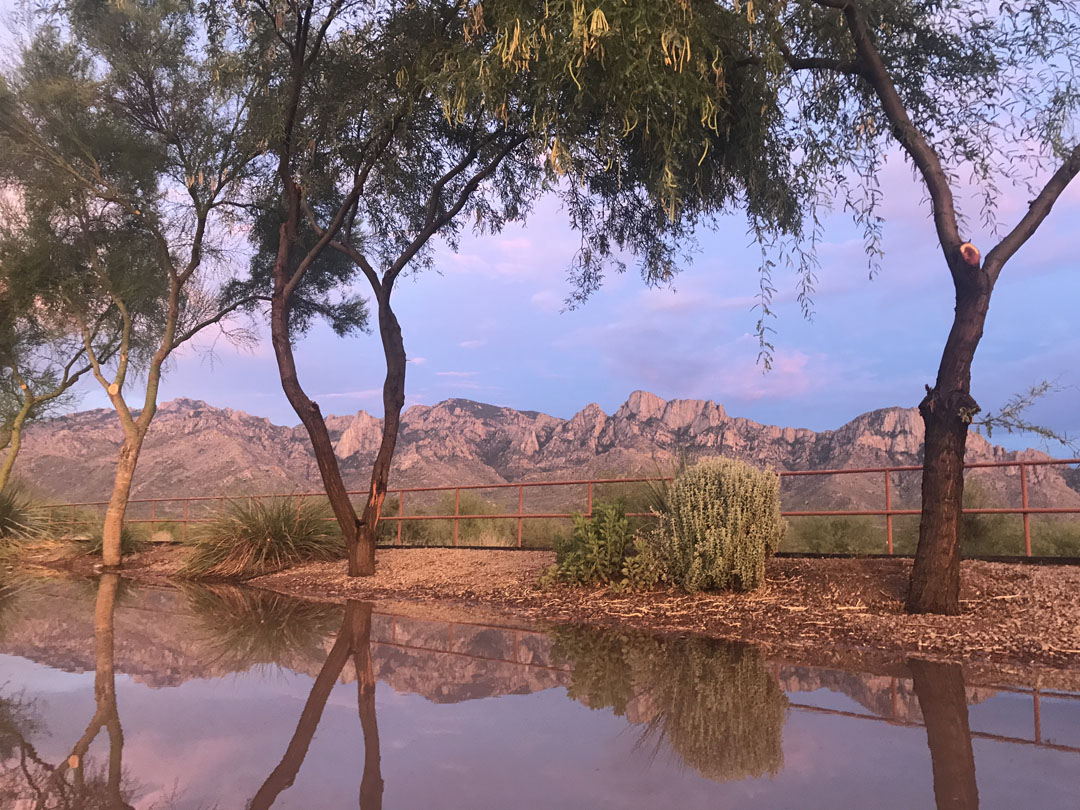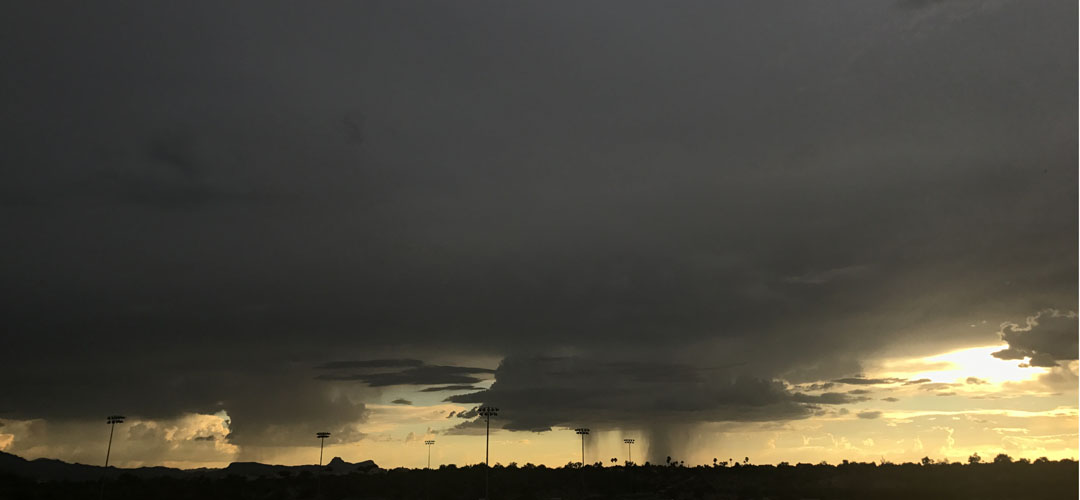What to do in your Tucson-Area Yard in July
While monsoon season in Tucson scientifically starts on June 15, July is usually when you'll start to see more rain in the forecast. The rain and resulting humidity will have a striking impact in your garden, plants, and you may even notice the saguaros getting plumper as they get their summertime drink. The monsoon rains lower the temperature for a time as well, which can also improve your garden's production.
Irrigation and Watering
Adjust irrigation frequency as appropriate based on rainfall this month. Use a rain gauge to see how much rainfall your property received - a good rule of thumb is to turn off or delay your watering system if you measure .5 inches of rain or more.
Lawns should be watered in the morning to prevent fungus growth, 4-8 AM is optimal.
You may want to consider harvesting rainwater this month. It doesn't need to be anything fancy - simply collect it in wooden barrels or plastic trashcans and cover the containers to prevent mosquitoes (or drop in Mosquito Dunks).
Rainwater Harvesting Resources
- You can use this detailed document from the University of Arizona Cooperative Extension as a guide.
- Water management resources on this website
 You Can Prune Native Trees in July
You Can Prune Native Trees in July
Most plants should not be pruned in July. During the hottest months of the year, they slow down growth (similar to winter dormancy) and don’t have as much energy available to heal pruning cuts. Pruning in July can also expose new parts of the plant to more intense sunlight and can cause the plant to burn from the added sun exposure.
However, mesquite, eucalyptus, and palo verde trees can be pruned this month, as these trees heal more quickly in hot temperatures.
Monsoon season brings strong winds, as well as ground-soaking downpours, both of which can wreak havoc on poorly-pruned (or unpruned) trees. If you have overgrown or structurally unsound trees, you may want to have an arborist check them. A reputable arborist will ensure your trees are properly pruned and will remove any hanging or dead branches that could pose a risk during high winds. There are more than 30 Certified Arborists in the Tucson area - you can find them through this website from the International Society of Arboriculture.
Continue Using Shade Cloth During Hot Temperatures
Many kinds of fruits, vegetables, plants, and flowers benefit from shade to survive our summer heat. Use shade cloth when necessary, especially for plants that don't get afternoon shade.
Many vegetables (and some flowers) grown in Tucson will benefit from 30% to 40% UV-blocking shade cloth, especially sun-sensitive plants like tomatoes, sweet peppers, and cucumbers that are prone to sunscald. Check the details on whatever shade cloth you buy – anything beyond 50% will likely block too much sun to be able to produce a good harvest of ripe vegetables or fruit. Use stakes, poles, wire cages, or other structures to hold the shade cloth away from the plants, and be sure to attach it securely so it doesn’t blow away!
If you’re looking for other ways to add shade to your Tucson yard, check out this blog post: How to Create Shade in Your Tucson Yard.
A Note About Tucson Planting and Growing Seasons
As you can see in this graphic from Tucson Organic Gardeners, July planting is optimal during the second half of the month (July 15 and later) when temperatures start to cool a bit, and humidity increases with the monsoon season. Traditionally, monsoon season runs from June 15 through September 15, although we seem to be experiencing it later in the summer in recent years. Monsoon season drastically changes the weather, meaning that growing and planting must adjust as well.
 Sow or Transplant Herbs and Vegetables
Sow or Transplant Herbs and Vegetables
Now is the best time to plant pumpkins if you want some in time for Halloween. Most mature in 100-120 days. Additionally, most herbs can be planted now, but avoid cilantro and parsley, as they can bolt because of the heat.
Sow these from seed
- Black-eyed peas
- Chinese pole beans
- Corn
- Armenian Cucumber (before July 15)
- Cucumber (after July 15)
- Melons
- Pumpkin
- Spinach
- Summer Squash
- Winter Squash (before July 15)
- Basil
For a fall harvest, you may want to start tomatoes, peppers, and eggplants inside.
Transplant these as seedlings
- Armenian Cucumber (after July 15)
- Eggplant
- Melons
- Peppers
- Pumpkin
- Spinach
- Summer Squash
- Winter Squash (before July 15)
- Tomato (after July 15)
- Basil
- Mint
- Oregano
- Rosemary
- Sage
- Thyme
If you don't have many pollinators in your garden, squash and cucumbers of all kinds may need to be hand-pollinated (here’s a YouTube video that explains the process). Or, better yet, plant a lot of flowering annuals between your vegetables to attract beneficial pollinators!
- Some Tucson gardeners choose to prune their tomato plants by 2/3rd this month.
- Clear out squash or any other plants that are no longer producing to make room for your monsoon planting.
Pests to Check For in July
Because of the increase of rain and moisture, weeds will pop up around your yard. You can use a pre-emergent herbicide to prevent some of the weeds (corn gluten is an organic option), or just wait until after the ground is soft from recent rainfall and pull them out.
Prickly pear cactus are likely to have cochineal scale this month, which shows up as white blobs. Try spraying the cactus paddles with a garden hose.
Watch for palo verde beetles this month. You may notice holes in the ground around palo verde trees. They can be treated with different types of insecticides if you prefer, though they do the most damage on trees that are already stressed or sick.
We hope these tips help you enjoy your Tucson-area yard and garden this month! Have fun!